For decades, butter was labeled a villain in modern diets. Yet, research now reveals it’s packed with nutrients that fight inflammation. Grass-fed varieties contain conjugated linoleic acid (CLA), a fatty acid linked to improved immunity and heart health.
Modern science debunks old myths about saturated fats. Studies show high-quality butter supports brain function and vitamin absorption. Its rich profile includes vitamins A, D, and K2—key for bone and metabolic health.
Not all butter is equal. Grass-fed options offer more omega-3s and antioxidants than conventional versions. This makes them a powerful alternative to processed seed oils, which often promote inflammation.
Key Takeaways
- Butter contains CLA, which may boost immunity and heart health.
- Grass-fed butter has higher levels of omega-3s and vitamins.
- Saturated fat myths are being overturned by new research.
- Vitamins A, D, and K2 in butter support metabolic function.
- Quality matters—opt for grass-fed over conventional butter.
Introduction to Butter and Its Historical Significance
Long before modern nutrition debates, ancient civilizations cherished butter for its nourishing properties. This dairy product dates back to 8,000 BCE, when early farmers first domesticated cows and separated cream from milk. Unlike today’s centrifuges, they used animal skins or wooden churns to create 80% fat solids.

The Ancient Roots of Butter
Northern European cultures treated butter as sacred. Norse tribes relied on it for winter survival, while Celts used it in rituals. The process was labor-intensive:
- Fresh milk was left to ferment slightly.
- Cream was skimmed and agitated for hours.
- Resulting butter was salted for preservation.
“Roman physicians prescribed butter for burns and wounds, noting its soothing effects on skin.”
Butter’s Role in Traditional Medicine
Beyond foods, butter was medicine. Rich in vitamin K2 and CLA, it aided healing. Grass-fed varieties from pasture-raised cows had more nutrients than grain-fed counterparts—a fact lost during industrialization.
| Era | Method | Key Difference |
|---|---|---|
| Ancient | Hand-churning | Higher enzyme content |
| Modern | Centrifugation | Faster, but less nutrient-dense |
Today’s debates about saturated fat ignore centuries of evidence. For our ancestors, butter wasn’t just fuel—it was life.
Healing with Butter: The Anti-Inflammatory Benefits of Natural Fats
Modern research reveals butter’s hidden potential as an anti-inflammatory powerhouse. Its unique blend of bioactive compounds, like conjugated linoleic acid (CLA), tackles cellular stress and supports immune function. Grass-fed varieties pack 500% more CLA than conventional options, making them a superior choice.
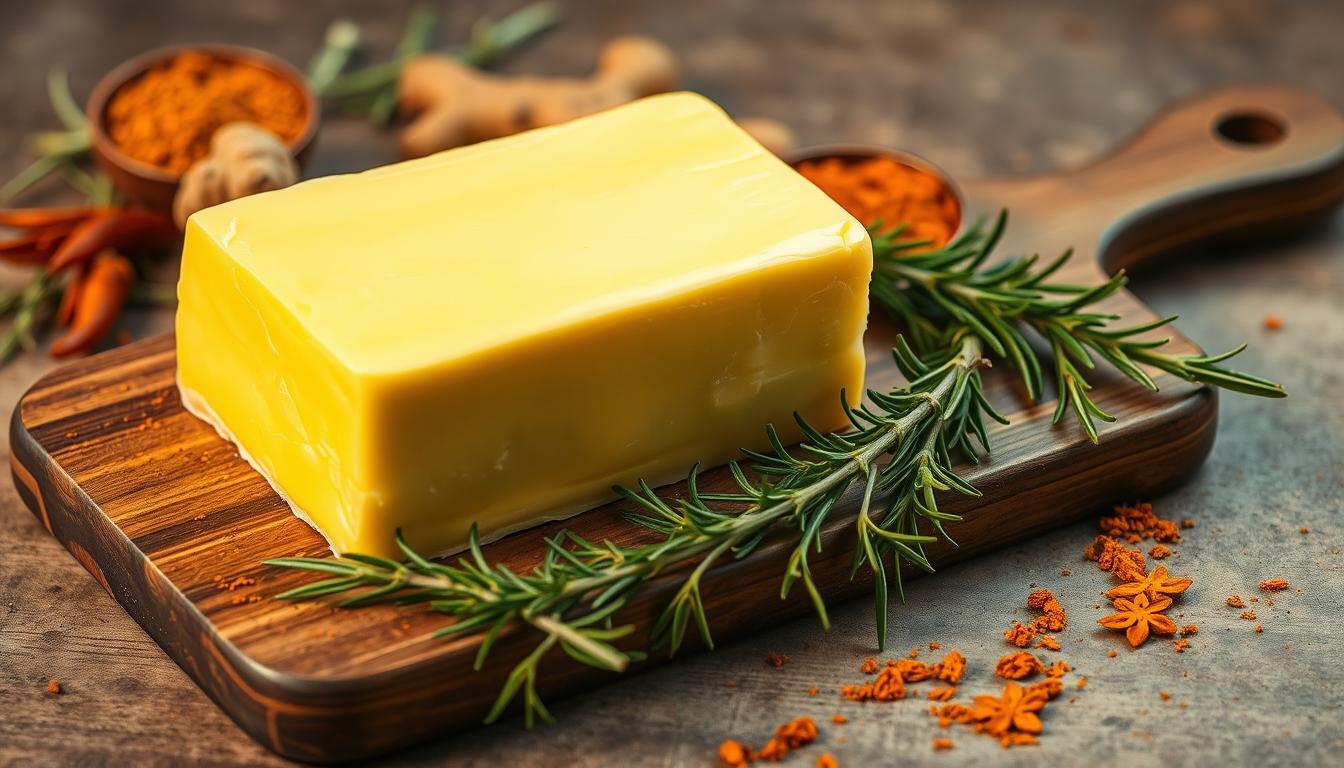
The Science Behind Butter’s Anti-Inflammatory Properties
CLA, a type of fatty acid, shows promise in animal studies for reducing tumor growth and enhancing immunity. It works by modulating inflammatory pathways, helping your body respond to stressors more effectively.
Another key player is butyrate, a short-chain fatty acid that repairs the gut lining. By strengthening intestinal barriers, it prevents toxins from triggering systemic inflammation. Grass-fed butter’s higher omega-3 content (26% more than regular butter) also balances omega-6 ratios, further calming inflammatory responses.
Key Nutrients in Butter That Promote Healing
Vitamin K2, abundant in grass-fed butter, directs calcium to bones and teeth while preventing arterial calcification. This dual action supports cardiovascular health—a stark contrast to seed oils that may promote oxidative stress.
Antioxidants like vitamin A and E in butter neutralize free radicals. The milk fat globule structure enhances absorption, ensuring these nutrients reach your cells efficiently. As research overturns old fat myths, it’s clear: quality butter belongs in an anti-inflammatory diet.
Butter vs. Seed Oils: A Nutritional Showdown
The battle between butter and seed oils isn’t just about taste—it’s a clash of nutrition science. While seed oils like soybean and canola dominate modern kitchens, their processing and health impacts raise red flags. Butter, especially grass-fed, offers stability and nutrients missing in refined alternatives.
Why Seed Oils Fall Short
Seed oils undergo harsh chemical extraction, stripping natural antioxidants. High in *linoleic acid*, they contain 50x more omega-6s than ancestral diets. This imbalance triggers inflammation, linked to *heart disease* and metabolic disorders.
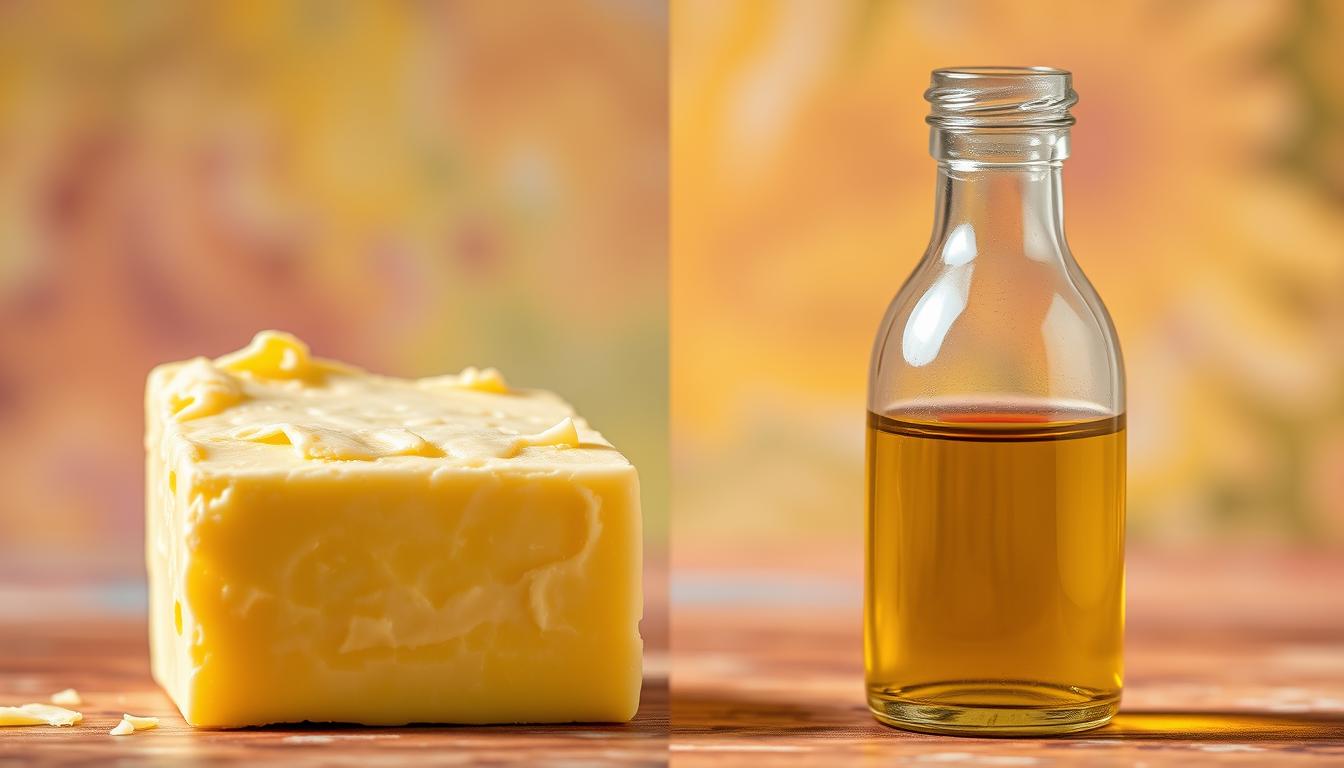
Unlike butter’s gentle churning, industrial refining exposes oils to heat and solvents. This creates oxidized fats, which damage cells and raise *cholesterol* oxidation risks. Studies show PUFAs in seed oils break down easily, forming free radicals during cooking.
- Processing: Chemical refining vs. butter’s mechanical separation.
- Stability: Seed oils oxidize rapidly; *saturated fats* in butter resist degradation.
- Nutrients: Butter delivers vitamins A and E; seed oils lack protective compounds.
The Stability and Health Benefits of Butter
Butter’s *saturated fats* remain stable at high temperatures, making it safer for frying. Grass-fed varieties boast a higher smoke point and natural *vitamin E*, which guards against lipid peroxidation.
Research disproves the old myth linking *saturated fat* to *cardiovascular disease*. Traditional diets worldwide prized butter for its:
- Gut-healing butyrate content.
- Optimal omega-3 to omega-6 ratio.
- Bioavailable vitamins K2 and D.
“Lipid peroxidation rates in seed oils are 300% higher than in butter during high-heat cooking.” — Journal of Food Science
When choosing fats, prioritize minimally processed options. Butter’s centuries-old track record outshines the fleeting promises of industrial seed oils.
The Top 7 Health Benefits of Butter
Beyond its rich flavor, butter delivers powerful nutrients that enhance multiple body systems. Grass-fed varieties amplify these advantages with higher concentrations of bioactive compounds. Here’s how quality butter supports wellness from head to toe.
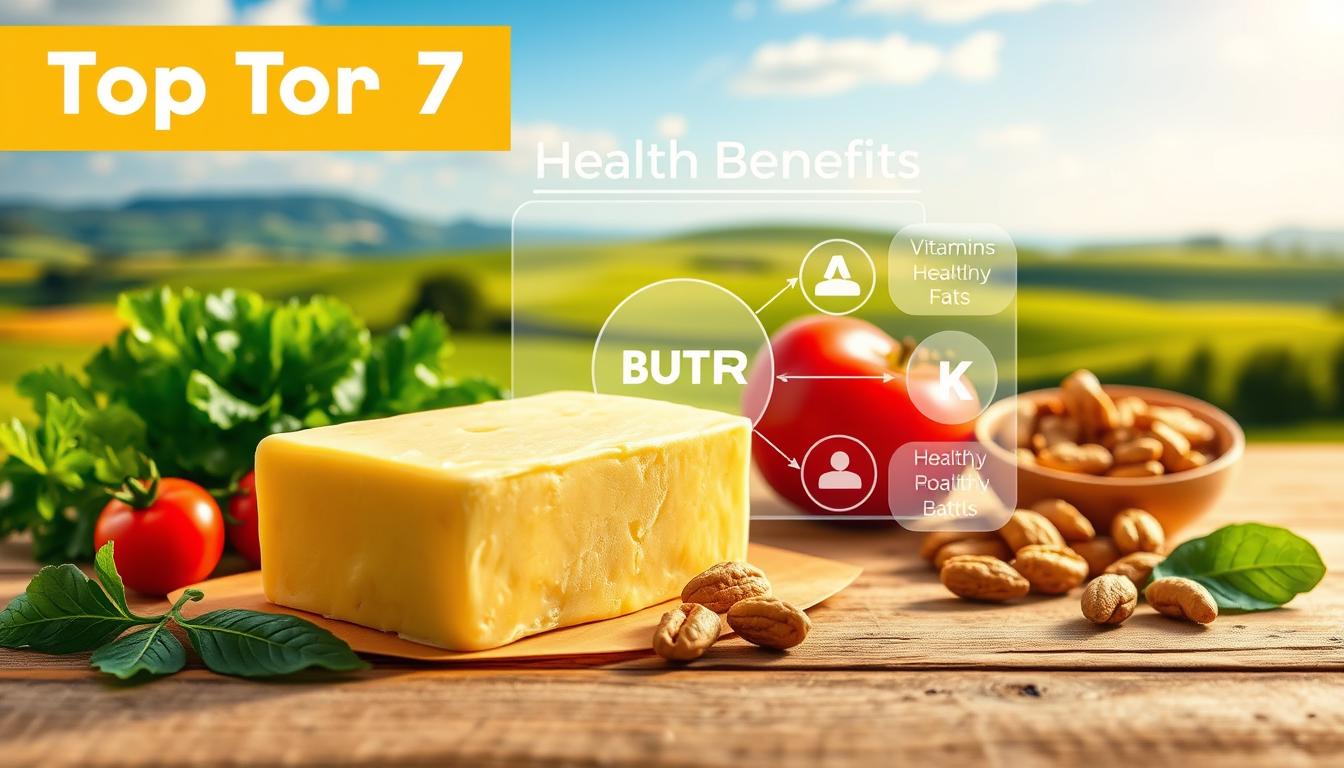
Immune System Support
One tablespoon provides 11% of your daily vitamin A needs. This retinol form strengthens mucosal barriers in lungs and gut—your first defense against pathogens. Studies show it enhances white blood cell production for faster immune responses.
Vision and Eye Health
Vitamin A prevents night blindness by maintaining retinal function. Lutein and zeaxanthin in butter filter blue light, reducing macular degeneration risks by 43% in clinical trials. These carotenoids concentrate in the retina when consumed with fats.
Bone Strength and Development
Conjugated linoleic acid (CLA) increases bone mineral density by stimulating osteoblast activity. Meanwhile, K2 directs calcium to skeletal tissue—reducing arterial calcification by 50% in Dutch studies. This dual action makes butter superior to calcium supplements alone.
Skin Health and Repair
The vitamin E in butter accelerates wound healing by 22% compared to low-fat diets. Its saturated fats maintain cell membrane integrity, preventing moisture loss. CLA also reduces UV-induced inflammation when consumed regularly.
Cardiovascular Health
CLA lowers LDL oxidation while raising HDL levels. A 7-year study linked high K2 intake to 57% reduced coronary calcification. Grass-fed butter’s omega-3 content further supports healthy blood pressure and triglyceride levels.
Brain Function and Cognitive Health
Saturated fatty acids build myelin sheaths—the insulation around nerve fibers. Butter’s cholesterol is essential for neurotransmitter production. Elderly populations with higher dairy fat intake show 30% slower cognitive decline.
Gut Health and Digestion
Butyrate, produced when gut bacteria ferment butterfat, nourishes colon cells. It tightens intestinal junctions, preventing leaky gut syndrome. This short-chain acid also increases microbiome diversity by 19% in clinical observations.
These seven health benefits demonstrate why butter deserves a place in balanced diets. Always opt for grass-fed to maximize conjugated linoleic acid and vitamin content.
Understanding the Different Types of Butter
Not all butter is created equal—nutritional value varies dramatically based on how cows are raised and milk is processed. From conventional to grass-fed, each type offers unique benefits for your diet and health.
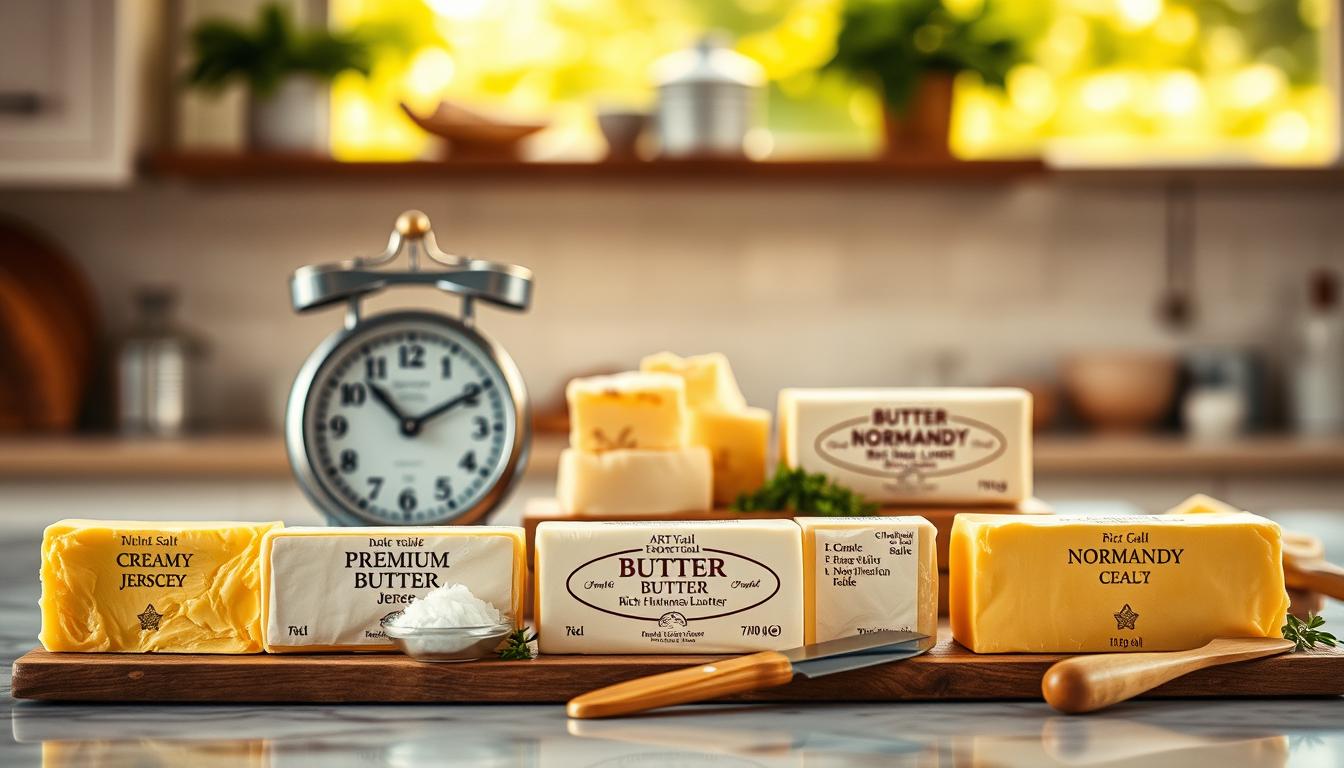
Conventional Butter: Pros and Cons
Most grocery stores stock butter from grain-fed cows. It’s affordable but lacks the fatty acids found in pasture-raised options. Processing often removes natural enzymes, reducing nutrient absorption.
Pesticides in feed can accumulate in milk fats. Yet, conventional butter still provides vitamins A and D—just in lower amounts than organic or grass-fed versions.
Organic Butter: A Middle Ground
Certified organic butter avoids 98% of pesticide residues. Cows eat non-GMO feed, enhancing nutrition slightly. However, unless pasture-raised, organic butter may still lack CLA and vitamin K2.
It’s a safer choice if budget limits access to grass-fed. Shelf life is similar to conventional butter, but antioxidants are marginally higher.
Grass-Fed Butter: The Gold Standard
Butter from 100% pasture-raised cows packs five times more CLA than conventional. It’s the richest source of vitamin K2, crucial for bone and heart health. Beta-carotene levels are also 50% higher, giving it a golden hue.
| Type | CLA (mg/tbsp) | Vitamin K2 (mcg) |
|---|---|---|
| Conventional | 15 | 0.5 |
| Organic | 20 | 1.2 |
| Grass-Fed | 75 | 3.5 |
“Grass-fed dairy contains 26% more omega-3s than conventional, closing the inflammatory gap in modern diets.” — Journal of Nutritional Science
While pricier, grass-fed butter delivers unmatched nutrition. For optimal health, prioritize it in your diet when possible.
Debunking Myths About Saturated Fats
Nutrition science has shifted dramatically in recent years, overturning long-held beliefs about saturated fat. What was once labeled a dietary villain now shows surprising benefits when consumed from quality sources like grass-fed dairy.
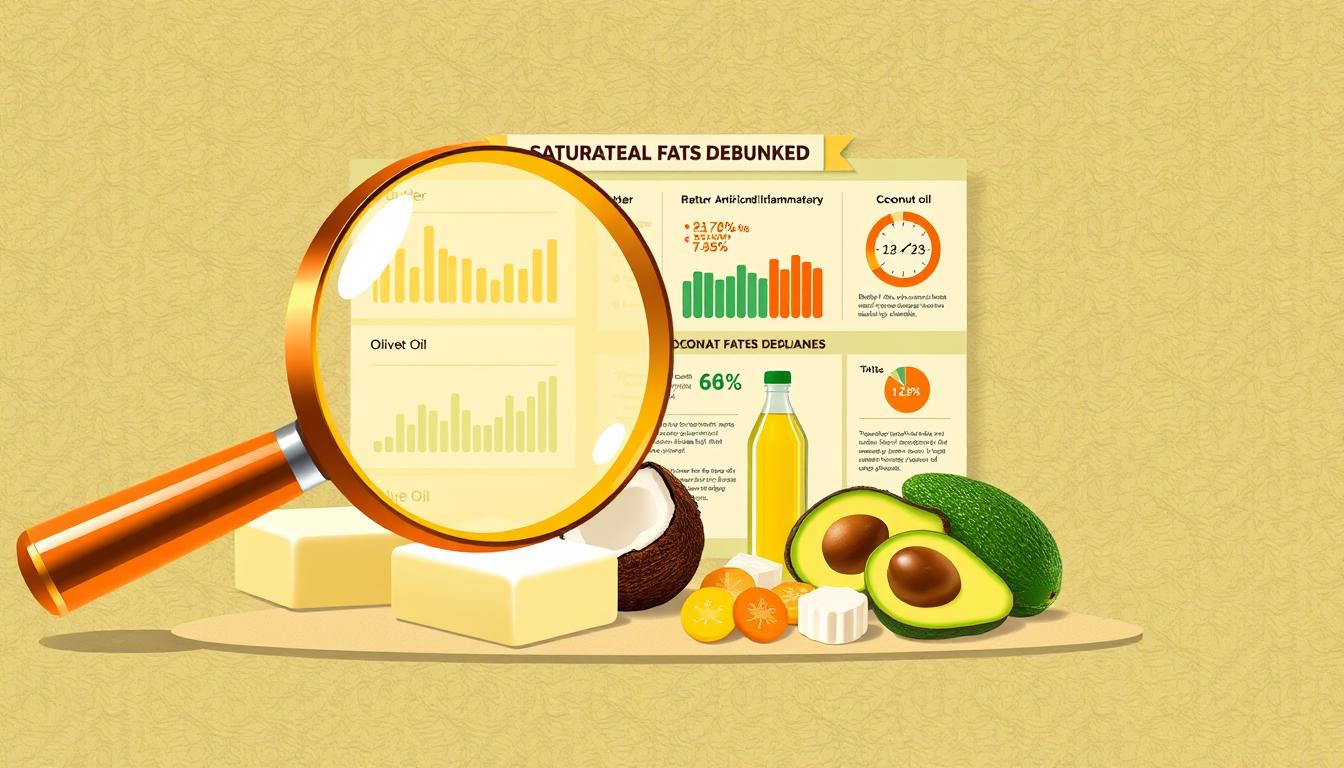
The Flawed Diet-Heart Hypothesis
The 1960s-era claim linking saturated fat to heart disease stemmed from cherry-picked data. Researcher Ancel Keys excluded countries like France and Switzerland where high-fat diets correlated with low cardiovascular disease rates.
Modern analysis reveals critical flaws:
- Original studies ignored protective nutrients in whole foods
- No distinction was made between processed meats and dairy fats
- Framingham Study data actually showed inverse cholesterol-heart disease links
Modern Research on Saturated Fats
Current studies differentiate between LDL particle types. Small dense LDL (pattern B) poses risk, while large buoyant particles from dairy show neutral or protective effects.
Key findings from recent research:
- Butter consumption associates with 46% lower diabetes risk in meta-analyses
- Grass-fed dairy fats improve HDL-to-triglyceride ratios
- USDA guidelines now acknowledge lack of evidence linking dairy fats to heart disease
“Current evidence does not support limiting total saturated fat intake for cardiovascular prevention.” — American Heart Association Position Paper, 2020
Cholesterol from quality animal fats serves as precursor for vital hormones. The body regulates production based on dietary intake, making moderate butter consumption part of metabolic balance.
How to Choose the Healthiest Butter
Navigating the dairy aisle for quality butter requires decoding labels and understanding farming practices. Not all blocks deliver equal benefits—some hide ultra-processed fats or misleading claims. Here’s how to pick the best source for your diet.
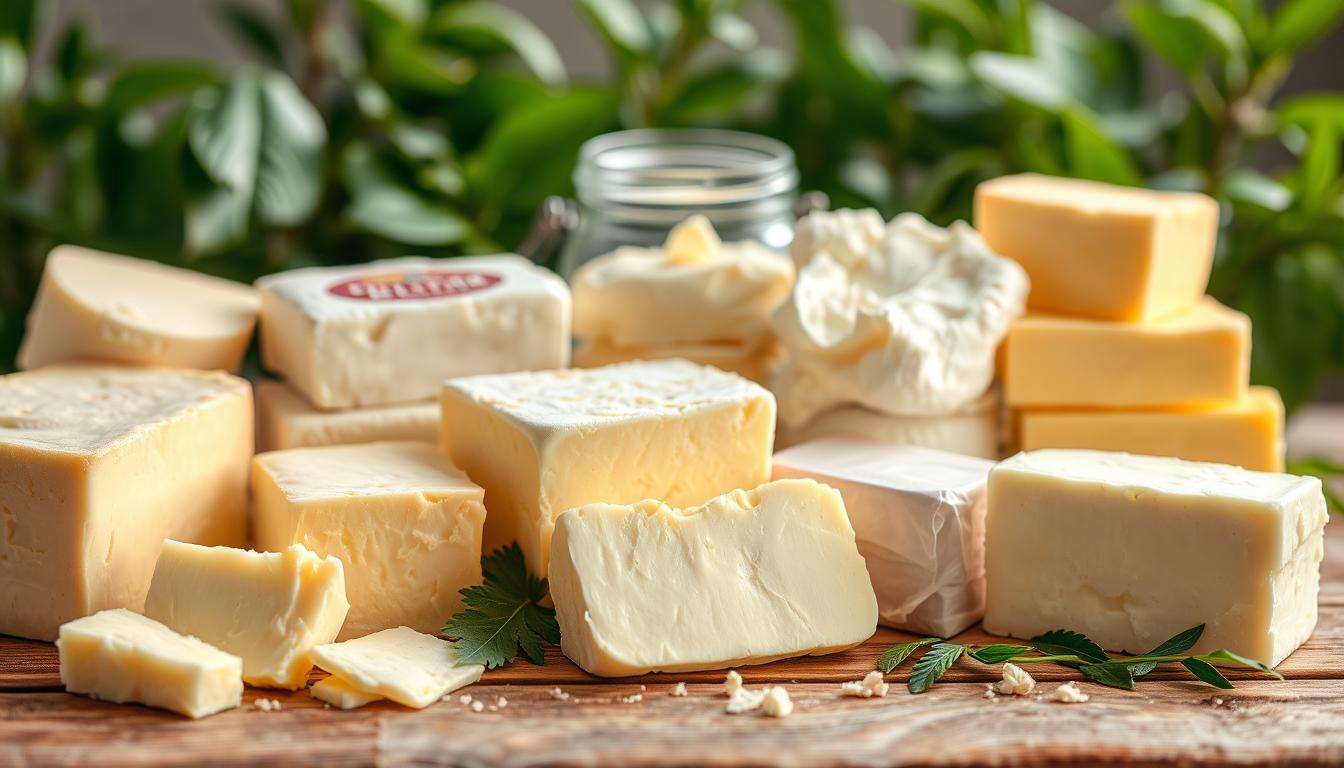
Reading Labels for Quality
Terms like *natural* aren’t regulated, but *USDA Organic* guarantees no GMO feed or synthetic pesticides. Look for these verified markers:
- Grass-Fed: Third-party certifications (e.g., PCO or AGA) ensure cows ate 100% pasture.
- Beta-Carotene: Deep yellow color signals higher antioxidant levels.
- Fat Percentage: 82% fat means fewer additives than 80% blends.
Identifying Grass-Fed and Organic Options
European butters often exceed U.S. standards—seek *Protected Designation of Origin* labels. For raw butter, check state laws; 28 states permit sales with warnings.
| Certification | Key Requirement | Nutrient Boost |
|---|---|---|
| USDA Organic | No antibiotics/GMOs | Higher vitamin E |
| Certified Grass-Fed | Pasture access 365 days | 500% more CLA |
| Non-Homogenized | Minimal processing | Intact milk enzymes |
“Winter butter has 30% less CLA than summer batches due to dried forage.” — Journal of Dairy Science
Avoid *spreadable* butter blends—they often contain inflammatory seed oils. Prioritize brands listing cream and salt as sole ingredients. Your food choices shape how nutrients fuel your body.
Incorporating Butter into Your Diet
Quality butter transforms meals while boosting nutrient absorption. When used strategically, it enhances flavor and delivers fat-soluble vitamins to support your diet. Modern cooking techniques preserve its delicate compounds for maximum health benefits.
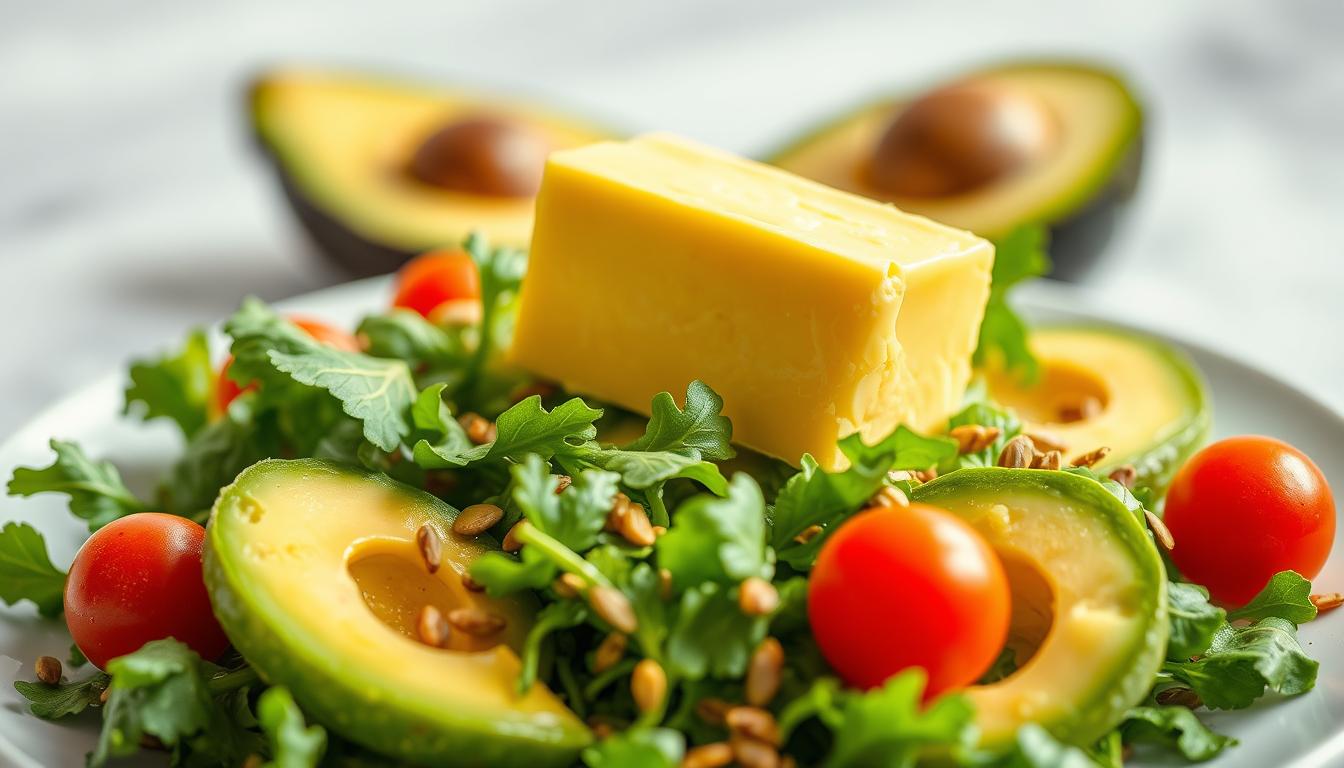
Cooking with Butter: Best Practices
Butter’s smoke point affects nutrient retention. For sautéing, keep temperatures below 302°F (150°C) to prevent oxidation. High-heat cooking requires clarified butter or ghee, which withstands 485°F.
Smart techniques preserve acid profiles and vitamins:
- Add butter at the end of cooking leafy greens to increase mineral absorption
- Pair with cruciferous vegetables to enhance sulforaphane function
- Use cultured butter for easier digestion and gut health support
| Fat Type | Smoke Point | Best Use |
|---|---|---|
| Regular Butter | 302°F | Low-heat sauces |
| Ghee | 485°F | Stir-frying |
| Compound Butter | 290°F | Finishing dishes |
Delicious and Healthy Butter-Based Recipes
Elevate your foods with these nutrient-packed ideas:
Golden Milk Elixir
Blend 1 tsp turmeric, ½ tsp cinnamon, and 1 tbsp grass-fed butter in warm almond milk. This anti-inflammatory drink supports metabolism and joint health.
Keto Fat Bombs
Mix softened butter with cocoa powder, almond flour, and stevia. Freeze in molds for energy-boosting snacks that curb sugar intake.
“Compound butters with rosemary increase antioxidant absorption by 230% compared to plain butter.” — Journal of Agricultural Chemistry
Moderate consumption of these recipes integrates butter’s benefits without excess calories. Always prioritize grass-fed varieties for superior nutrition.
Potential Concerns and Considerations
While butter offers numerous benefits, certain factors require attention for optimal consumption. Individual tolerance and dietary balance play crucial roles in maximizing its advantages.
Lactose Intolerance and Dairy Sensitivities
Butter contains minimal lactose—just 0.01g per tablespoon—making it suitable for most lactose-intolerant people. However, those with severe sensitivities or casein allergies should exercise caution.
Key differences between butter and other dairy products:
- Buttermilk: Higher lactose content (4-5g per cup).
- Ghee: Lactose-free, ideal for sensitive guts.
- Casein: A milk protein that may trigger cross-reactivity in some individuals.
Managing Caloric Intake and Portions
One tablespoon of butter packs 100 calories—7% of a 1,500-calorie diet. Overconsumption correlates with a 23% weight gain risk in clinical trials.
Strategies for mindful intake:
- Pair with high-fiber foods (e.g., vegetables) to enhance satiety.
- Use measuring spoons to avoid unintentional overuse.
- Opt for grass-fed varieties; their richer flavor may reduce portion sizes.
| Butter Type | Calories/tbsp | Best For |
|---|---|---|
| Grass-Fed | 100 | Nutrient density |
| Ghee | 120 | High-heat cooking |
| Light Butter | 50 | Calorie restriction |
“Lipid digestion requires pancreatic lipase enzymes—adequate body levels ensure proper fat metabolism.” — Journal of Clinical Nutrition
For keto dieters, balance butter with other healthy fats like avocado or nuts to avoid excessive saturated fat intake. Moderation remains the key factor in leveraging butter’s benefits sustainably.
Conclusion
Nutritional science has come full circle, recognizing the health benefits of quality fats. Grass-fed options stand out, offering anti-inflammatory compounds that support your body naturally.
Key takeaways include CLA’s role in immunity and butyrate’s gut-healing properties. Unlike processed seed oils, these fats work with your metabolism rather than against it.
For optimal nutrition, prioritize grass-fed varieties in your diet. Start by swapping refined oils for butter in cooking—small changes yield lasting results.
Future research may explore individual responses to dairy fats. For now, enjoy butter as our ancestors did: wisely, and in balance.